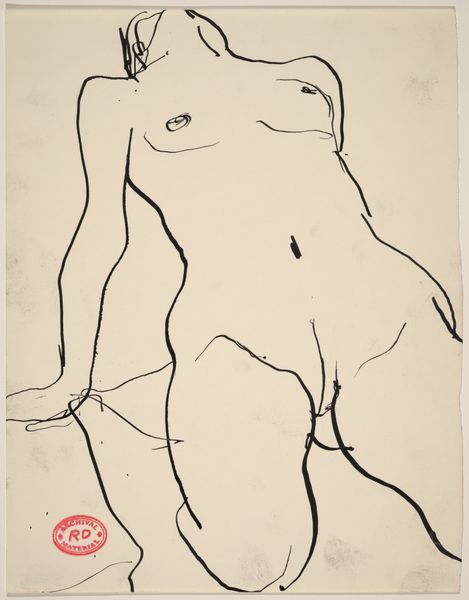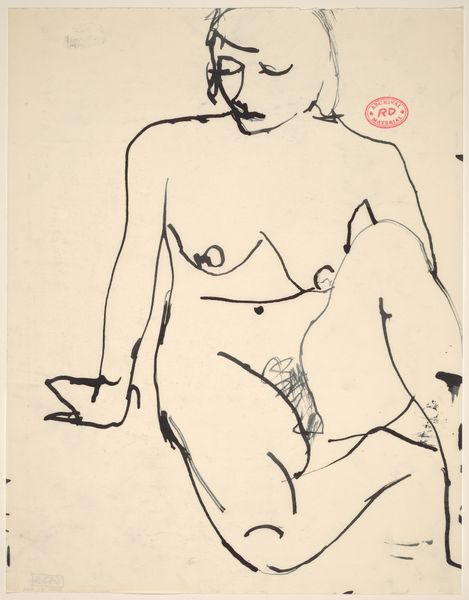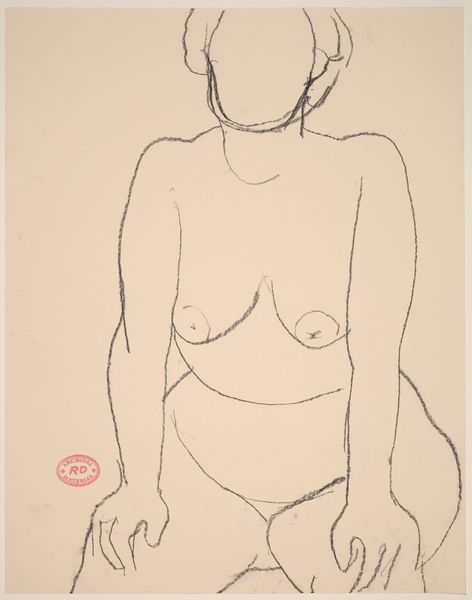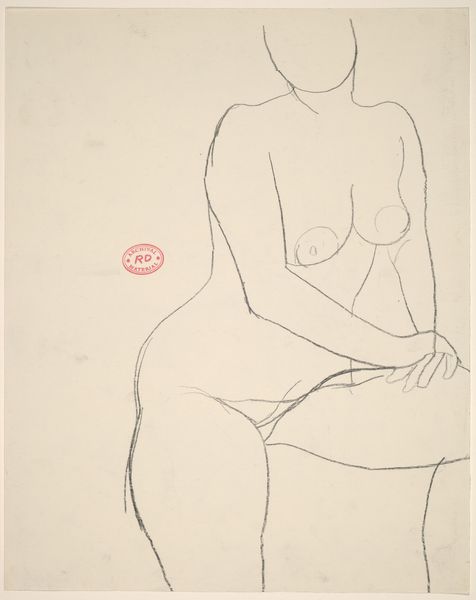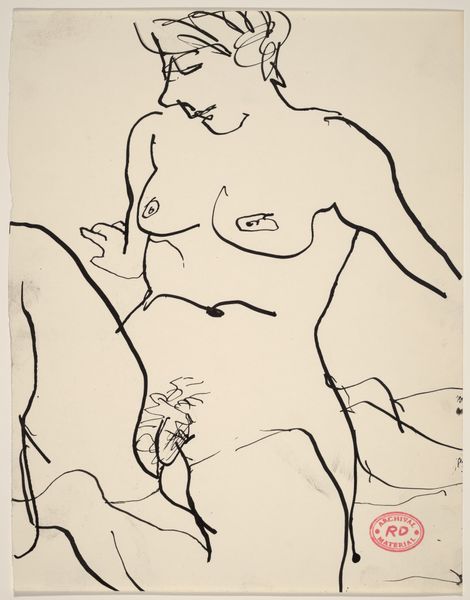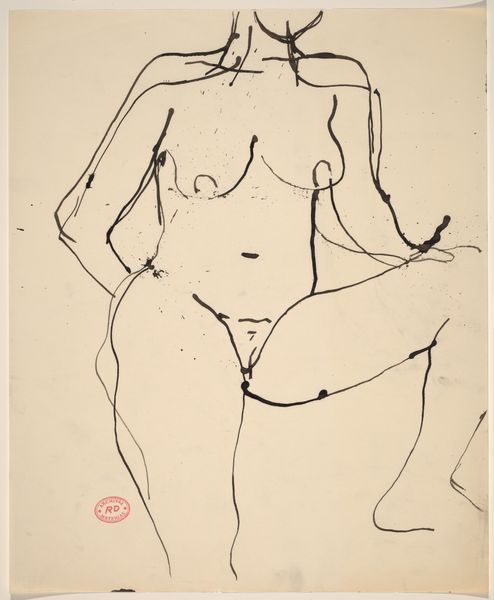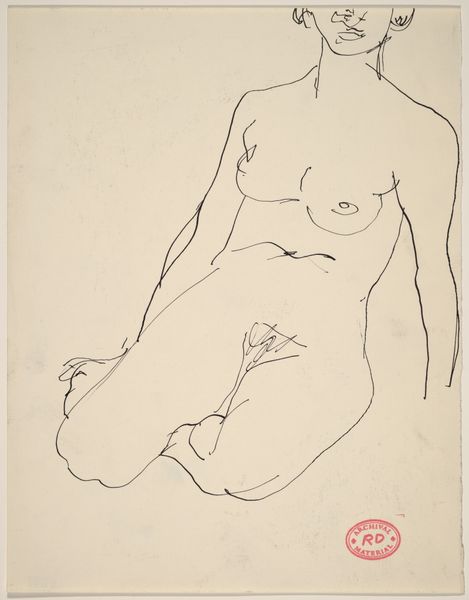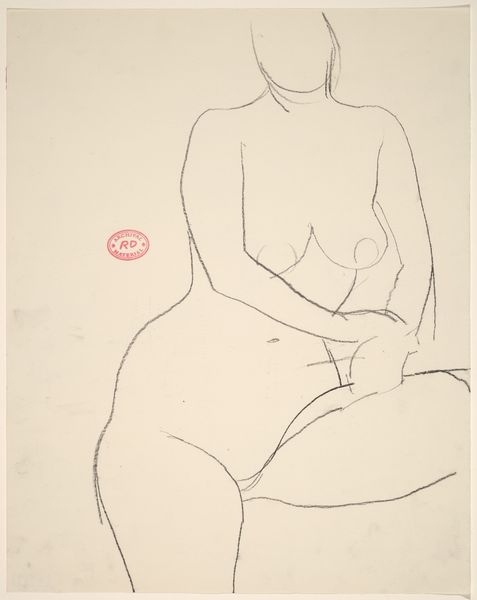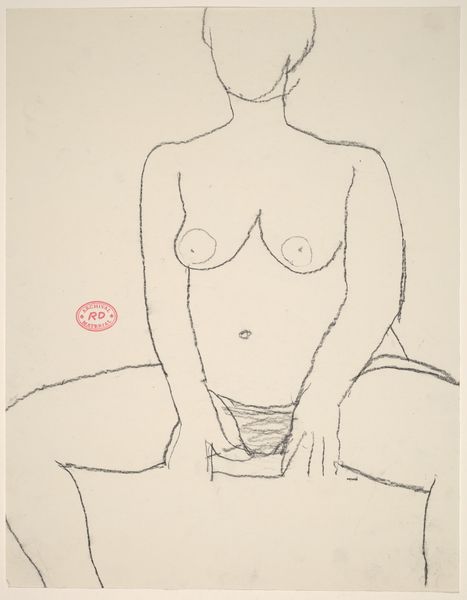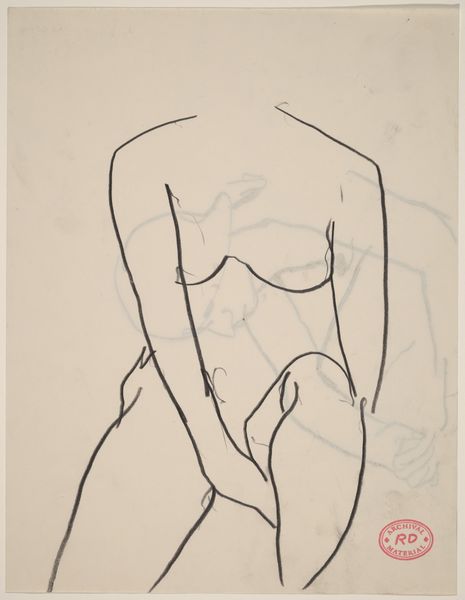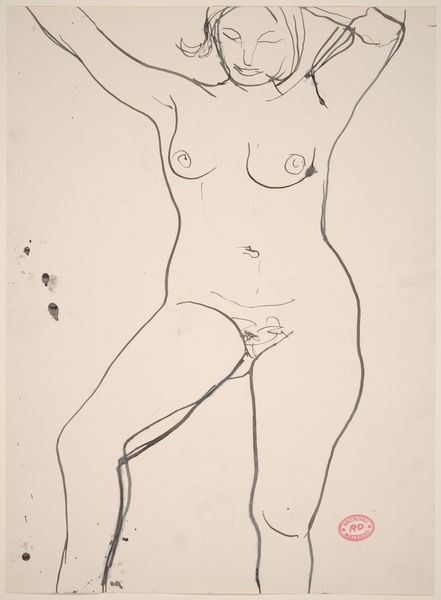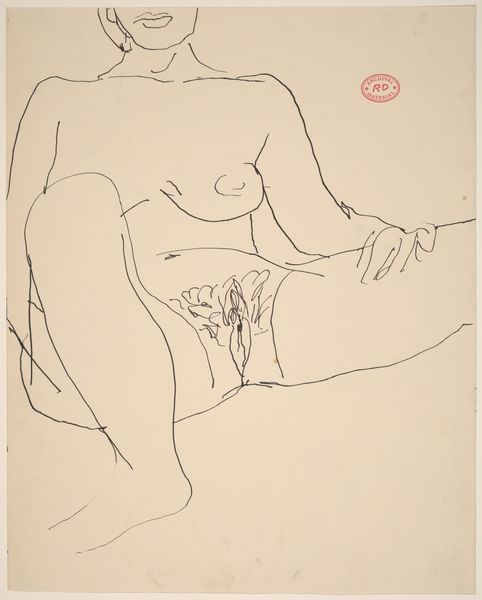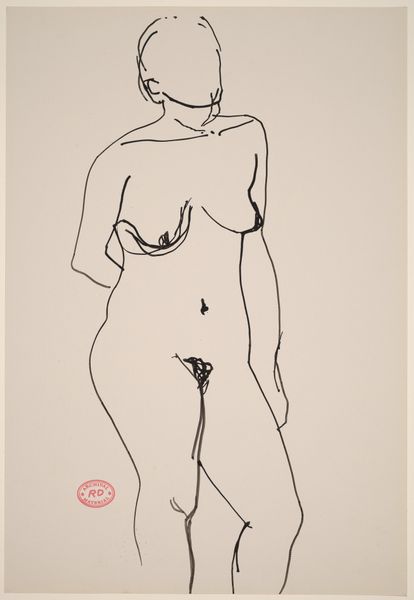![Untitled [nude seated resting her hands on her thighs] by Richard Diebenkorn](/_next/image?url=https%3A%2F%2Fd2w8kbdekdi1gv.cloudfront.net%2FeyJidWNrZXQiOiAiYXJ0ZXJhLWltYWdlcy1idWNrZXQiLCAia2V5IjogImFydHdvcmtzL2FkMzQ2ODk3LWY1ZTctNDlkMC05ZDM0LTE4NGI4MGJhZDUwZC9hZDM0Njg5Ny1mNWU3LTQ5ZDAtOWQzNC0xODRiODBiYWQ1MGRfZnVsbC5qcGciLCAiZWRpdHMiOiB7InJlc2l6ZSI6IHsid2lkdGgiOiAxOTIwLCAiaGVpZ2h0IjogMTkyMCwgImZpdCI6ICJpbnNpZGUifX19&w=3840&q=75)
Untitled [nude seated resting her hands on her thighs] 1955 - 1967
0:00
0:00
drawing, ink, pen
#
drawing
#
ink drawing
#
pen sketch
#
figuration
#
ink line art
#
bay-area-figurative-movement
#
ink
#
linocut print
#
ink drawing experimentation
#
pen-ink sketch
#
line
#
pen
#
nude
Dimensions: overall: 27.9 x 21.6 cm (11 x 8 1/2 in.)
Copyright: National Gallery of Art: CC0 1.0
Curator: Let's spend a moment examining Richard Diebenkorn’s "Untitled [nude seated resting her hands on her thighs]", likely created between 1955 and 1967. This pen and ink drawing presents a minimalist study of the human form. What's your immediate take on it? Editor: Raw, almost vulnerable. The sparseness of the line work strips away any romanticism often associated with the nude, leaving something quite elemental. The pose itself feels weighted, grounded, perhaps even a little melancholic. Curator: Precisely. This drawing exists within a period of Diebenkorn's transition from abstract expressionism back to figuration. He was exploring ways to balance spontaneity with the careful articulation of form, and this piece certainly demonstrates that tension. What social constructs may have been challenged by it at the time? Editor: Well, depicting the female nude has historically been loaded with societal expectations and male gaze dynamics. However, the deliberate crudeness of the lines here, the absence of idealization, seems to push back against that objectification. The very directness could be seen as asserting a woman's right to exist, unadorned and free from those burdens. But maybe, more likely, just capturing a mood, not really taking sides. Curator: It's true, Diebenkorn was often more concerned with formal problems—the relationship between line and space—than with explicitly political statements. Still, an artist can never completely escape the social context in which they operate. What's compelling, for me, is the dialogue this work opens up between tradition and innovation. Editor: Definitely. This almost looks like some Picasso contour sketches from the first part of the 20th century, like a memory of Modern art…It's almost like an homage, isn’t it? To movements that were beginning to challenge old social and esthetic constructs through form and presentation. Curator: Perhaps. His engagement with modernism and then his movement back to form reflects that tension. A really pivotal time that also produced great artists. I'll admit, seeing this work brings me back to art classes of the time; this could almost be me, figuring out the curve of the figure, figuring out myself. Editor: Agreed. These very human, accessible images, even with simple lines, resonate today with an art public weary of slicker images. It connects the body as lived in and experienced, an empowering way to approach what is "acceptable," at least visually, in public space. It gives an almost timeless echo for social agency that I believe moves art. Curator: Very well said, I concur with your position, both emotionally and intellectually.
Comments
No comments
Be the first to comment and join the conversation on the ultimate creative platform.
